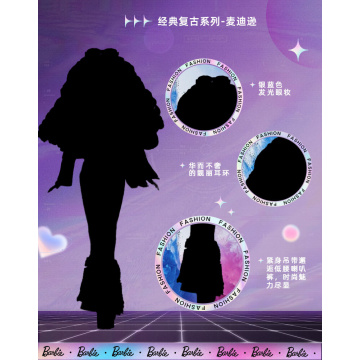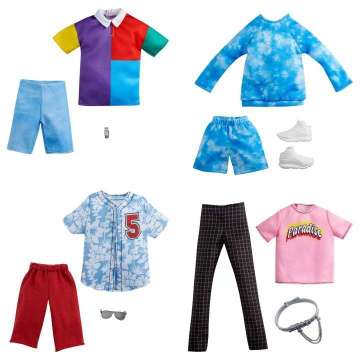International Barbie production

Barbie was created by Ruth Handler, wife of Elliot Handler, co-founder of the American company Mattel in 1958, producing and selling only in this country. In the 70s, thanks to Barbie Malibu, officially crosses the barriers of the US, reaching all continents. For this reason, the first copies of Barbie (Vintage and MOD) are so difficult to find in our countries and to obtain them we must resort to international sales through, for example, Ebay and other places.
Precisely in the 70's, Ruth is fired from Mattel due to cuts due to enormous losses that the company had suffered. The United States suffered economically as a result of the war with Vietnam, which never seemed to end.
To try to make a comeback, Mattel decided to provide licenses to several countries around the world for the manufacturing and distribution of Barbie, due to various factors:
- Mattel's losses, which cause Barbie to be rethought and re-promoted, not only for the US market but also for exports.
- Many countries worldwide, due to their political situation, limited exports to promote the growth of national industry.
- A strategic way to turn Barbie, not into a foreign and foreign toy, but, on the contrary, a doll that absorbed the culture of each country and the meaning was simpler. n on the part of boys, girls, mothers and fathers.
At this time, Barbie already had "her playmates" at her disposal and a whole host of accessories and sets that complemented her world. Characters of different ethnicities (African-American, Hispanic and Asian), such as Ken, Skipper, Christie, Midge, PJ, among others. So well, when Mattel grants licenses to Latin American countries such as Argentina, Mexico, Brazil, Peru, Venezuela; and in Europe: Spain, Germany, Portugal; He also gives them dies of a variety of dolls, not just Barbie.
Mattel continued producing its various Barbie lines in the US, in parallel with these companies. What was produced in the US was also produced in our countries, but with slight, or in certain cases, total alterations to the “original” model. United States. In short, we managed to have unique models that had little to do with the “original” prescribed by Mattel. These alterations to the models made Barbie much more popular in our countries and Mattel gave certain companies a boost. Carte blanche to create your own Barbie designs. These models are known in the international market as “rares” (rarities).
Barbie made in Spain: Barbie Congost
Approximately in 1977 the American company Mattel allowed A Spanish company, Congost, to manufactured and distributed some of its most emblematic products. Among them was Barbie, a collaboration that would continue until approximately 1984. Then it would be manufactured by Mattel Spain until 1990.
Molds belonging to Mattel were used in manufacturing, but the finishes were different from those of the international prototype, showing differences in hair, makeup and clothing, to adapt to the Spanish physical type. Some models were also created that were distributed exclusively in the Peninsula, such as Barbie Top Model (1989) or Barbie 10º Anniversary in Spain (1987), dressed by Pertegaz.
Nowadays, all these dolls have become the object of desire of collectors, and their value has grown exponentially.
Barbie made in Mexico: Barbie Cipsa
Barbies manufactured in Latin America by the Cipsa company in Mexico. Cipsa manufactured dolls since the early 70's.
The Mexican company created Valerie, Barbie's friend, only available in this country, and which is quite difficult to find and is valued at over $250.
Barbie Quick Curl was made in Mexico with different makeup than the “original model” and “steffie” face mold.
Todd, Tracey's boyfriend, had Ken's face mold from '83 in Mexico, different from the “original” who used the Ken Superstar face mold.
Barbie made in Brazil: Barbie Estrela
Barbies manufactured in Latin America by the Estrela company in Brazil. The dolls created by Estrela are world-famous, due to their detailed and elaborate makeup, in addition to their costumes and the use of articulated arms.
Some of the models made in the early 80's are really daring, such as New Wave Barbie, with colorful costumes and pink and blue hair.
Notable examples such as Barbie Passeio, produced only in Brazil, as well as Barbie Ciclista. Most of these dolls cost over $100, especially Lia and Vicky, Barbie's friends who were only available in Brazil.
Barbie made in Venezuela: Barbie Rotoplast
Barbies manufactured in Latin America between the years 84 and 94 by the company Rotoplast in Venezuela. The main headquarters of Rotoplast was located in San Felipe, Yaracuy State, which in addition to manufacturing and distributing in Venezuela, exported to Colombia. This happened In most companies in Latin America, except Brazil, they exported to neighboring countries. Example: Argentina to Uruguay.
Rotoplast dolls have particular and unique features
- The characteristic makeup of a Venezuelan Barbie is violet shadow and eyes and red lips. Crystal Barbie, Corazon Barbie (Loving You) and many others that were produced in parallel with the "original model", vary from it, mainly because of the popular purple makeup.
A fact that few know is that Venezuelan Barbies used REAL brushes (blush). No, it was not painted, but delicately placed on each one of them, the sad thing is that obviously those of us who have these dolls without a box have already lost their original blush.
The rumor about the withdrawal of the Barbie license in Venezuela was for "quality" reasons since the dolls, although they have great hair, very well made dresses, etc., have a serious defect that The thing is that the part of the neck, right where it connects to the head, tends to melt like that. tell him. Collectors know how to solve the problem, but at that time girls unintentionally ended up with headless Barbies.
Rotoplast created several unique models made only in Venezuela such as Barbie Llanera, Miss Barbie, Magia Azul, De Moda, and others, which wear the aforementioned Venezuelan makeup. - The tones of the hair and the quality of the synthetic hair were very shiny and silky in dark brown tones, very ashy blondes and the platinum blonde that was the most common in other countries.
Ken also had a notable foray into Venezuela. Ken Llanero dressed in liqui liqui and Ken Olímpico, who uses the face mold of Dereck from the Rockers, but with a more tanned skin tone.
Invaluable and extremely beautiful piece is the Barbie Primavera, Creole design and manufacturing.
Barbie made in Argentina: Barbie Top Toys
Barbies manufactured in Latin America by the company Top Toys in Argentina. Top Toys marketed to Ken under the name Kenny giving it a special touch that makes Ken collectors go crazy with Kenny's copies. One of the most popular Kennys is Kenny Rock Star, as the US Barbie and The Rockers line was called in Argentina.
An example of Barbie is Barbie Felices Fiestas (Happy Holidays) which in Argentina showed off. a pink dress and ultimately very different from the “original model” which was produced in parallel in the US.
Barbie made in Chile: Barbie Plasticos Gloria
Barbies manufactured in Latin America by the company Plásticos Gloria in Chile.
Barbie made in Peru: Barbie Basa
Barbies manufactured in Latin America in the 80s and 90s by the Basa company from Peru. They enjoy that particular beauty that each of our countries gave to Barbie.
The Peruvian toy company BASA manufactured many Barbies, and also Kens and even Dereks (but that doesn't even count, since they used the same "Crystal Ken" mold for both male characters)
The Basa company did not make Christies & Peruvian skippers.
Examples of "Superstar Barbie", "Pink 'n Pretty Barbie", "Beauty Secrets Barbie" and "Dream Glow Barbie" dolls that were also made in American, Spanish and Venezuelan versions with subtle nuances and boxes printed in Spanish.
- visits: 8816
- 29-04-2018
- News
Last entries
Margaux Lange and Barbie
If you're a fan of Barbie and love bold, artistic fashion, Margaux Lange is a name you need to know. Her innovative jewelry collection, the Plastic Body Series, transforms authentic Barbie doll parts into...
Read moreBarbie Basics Original VS Barbie Basics 2025
Barbie Basics: A Comparison Between 2009, 2010, 2011, and 2025 Editions The Barbie Basics line has been a staple in the doll-collecting world since its launch in 2009. Known for its sleek and minimalist...
Read more2025 Mexico Fashion Doll Convention
Get ready for the First Barbie Convention in Mexico City 2025! For the first time, the magic and glamour of Barbie will come together in an unforgettable event: the Mexico Fashion Doll Convention B219....
Read more
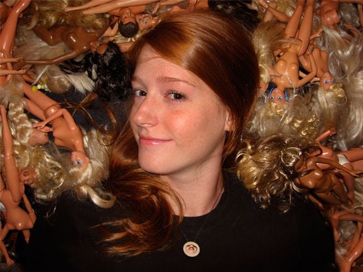

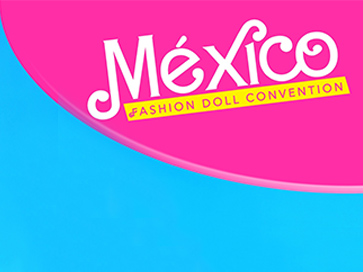
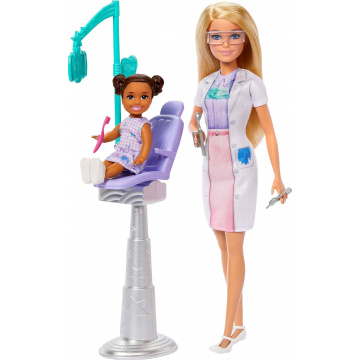
 See on Amazon
See on Amazon
